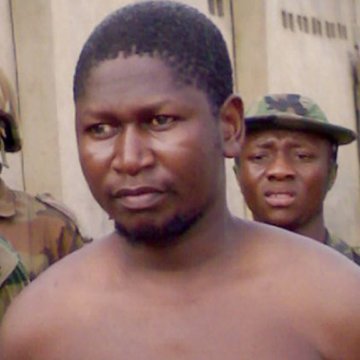- About
- Topics
- Picks
- Audio
- Story
- In-Depth
- Opinion
- News
- Donate
-
Signup for our newsletterOur Editors' Best Picks.Send
Read, Debate: Engage.

| located: | Nigeria |
|---|---|
| editor: | Shira Jeczmien |
It was recently announced that the home of Mohammed Yusuf, founder and former leader of the vicious terror group Boko Haram, based in Kano, is to be transformed into a museum in an aim to chart – historicise – the insurgency of the vicious Islamist terror group.
What can and cannot, should or should not be a part of this homogenous history has been under scrutiny from those who history has left out. Which makes it much more complex to externally intervene in a people’s desire to memorialise —and rightly so. When officials from the Nigerian province of Borno state announced back in November 2017 that the home of Boko Haram founder will be turned into a museum and the surrounding Sambisa forest, the violent terrorist group’s base, into a tourist centre, many found themselves in a tricky situation.
Memorialising historical events into a museum—and with that institutionalising facts and histories—is what modern civilisation has become quite good at. Children are raised on tales of preconceived text books, and cities around the world are sprinkled with grandiose buildings that house history; whatever this history entails.
Indeed there is importance in capturing elements of Boko Haram’s murderous Sunni Islamist terror group, that has, since its recent insurgency in 2009, killed tens of thousands of civilians and displaced 2.3 million from their homes. Founded in 2003 in the north eastern Nigerian state, Boko Haram has leaked its volatile ideology into neighbouring northern Cameroon, Chad and Niger. In fact, in 2015 the group was ranked the deadliest terror organisation by Global Terrorism Index.
In a BBC interview in last year, Tukur Buratai, Nigeria’s army chief, said Boko Haram has been “defeated.” Yet mounting evidence show otherwise. A report released in July showed that since the beginning of 2017, the group has launched 43 attacks that have led to the deaths of over 200 civilians—with the year now coming to an end, these numbers are assumed, tragically, to be much higher.
In her recent convoluted commentary on the museum in the age of planetary civil war, German artist and writer Hito Steyerl notes that a tank cannot be used in the museum as long as it has very real functions in the world. Only war objects that no longer serve us today should be museumified, like a cannon that has been filled with concrete. Only when rendered useless, outdated and in the past can this object avoid becoming glorified instead of memorialised. The Borno state information commissioner, Mohammed Bulama, said converting the building into a museum would be a way of "documenting, preserving and archiving our history. The Boko Haram insurgency is a turning point in the history of Borno state and the northeast. Our history cannot be written without reference to Boko Haram.“
Writing this from the other side of the world, far away from civil wars that exceed any violence I am able to comprehend, it might seem out of place to deem the Boko Haram museum inappropriate. But at least from where I’m sitting, as long as ideologies such as those terror group was founded on and is still acting on behalf of continue to be rife across central Africa, and many countries across the world; as long as violence and weapons, civilian deaths and extremist religious groups continue to terrorise and destroy, no place or object that represents these acts can yet be filled with concrete and institutionalised into a museum.